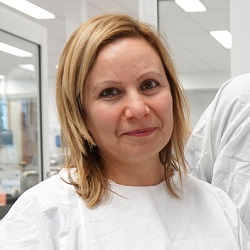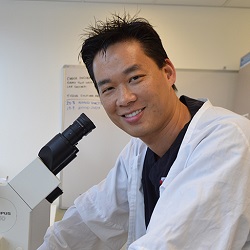April 29, 2018 Print
Researchers in our Infection and Immunity research division are dedicated to understanding serious diseases and investigating treatments, vaccines and cures that will prevent the spread, mortality rates, and impact of diseases such as influenza, HIV, and hepatitis.
This research helps us move towards our goal of improving global health. For International Day of Immunology, we are highlighting some of the major developments in immunological research that have happened here at the Westmead Institute over the last few years.
 How HIV beats the body’s early immune response
How HIV beats the body’s early immune response
Research, led by Dr Najla Nasr, found that the HIV virus infects immune cells, preventing them from releasing interferon and defending the body against the initial HIV infection. The team also found that HIV stimulates certain genes that enable it to spread. Researchers are now investigating how HIV stimulates these genes to not only slow the virus down but stop its spread completely. Read more.
 One drop of blood could save your life
One drop of blood could save your life
In a world first, lead researcher Associate Professor Benjamin Tang and his team developed a blood test – the High-Risk Influenza Screen Test (HIST) – which can determine which influenza patients are at risk of developing life-threatening secondary infections, such as pneumonia. The test will help reduce mortality rates associated with influenza, which currently stands at more than 3,000 Australians each year. Read more.
 Why the latest shingles vaccine is more than 90% effective
Why the latest shingles vaccine is more than 90% effective
The new shingles vaccine, Shingrix, was found to generate a 24-fold increase in T-cells, the immune cells that kill cells infected with shingles. This is substantially higher than in other, less effective vaccines. Shingles is a viral infection that causes a painful, blistering rash. The risk of developing shingles is highest in older individuals. Importantly, the vaccine, developed by Professor Tony Cunningham and his team, was found to be extremely effective, even for those aged over 70. Read more.
 Scientists find where HIV ‘hides’ in the body
Scientists find where HIV ‘hides’ in the body
In a decades-long game of hide and seek scientists have confirmed the specific immune memory T-cells where infectious HIV ‘hides’ in the human body to evade detection by the immune system. The team, led by Associate Professor Sarah Palmer, is working towards targeting these cells with new therapies aimed at fully eliminating HIV from the body. Read more.